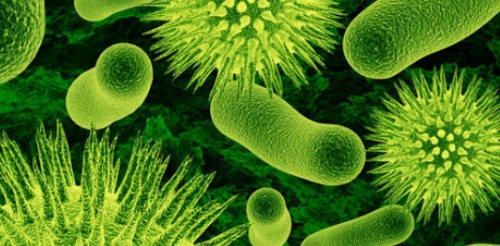 Fighting superbugs with technology and lightweight
Fighting superbugs with technology and lightweightA new tool is rising within the fight against antibiotic-resistant microorganism unwellness. on the far side the world efforts to limit overuse and abuse of antibiotic medication, nanomedicine is finding extra ways in which to attack these
superbugs.
Nanoparticles, 1,000,000 times smaller than a metric linear unit, square measure proving to be stable, simple to deliver and pronto incorporated into cells.
In recent work, a bunch of researchers at the University of Colorado, of that i'm a member, has used nanoscale quantum dots – minuscule semiconductor particles with specific light-absorption properties – to kill drug-resistant superbugs while not harming the encompassing healthy tissue.
Once introduced into the body, the quantum dots do nothing till they're activated by having a lightweight shined on them. Any actinic ray supply (a lamp, light source or perhaps sunlight) is used for this. to date our analysis has centered on topical infections on the skin; deeper within the body, brighter lights or a lot of nanoparticles is also required.
When activated by light-weight, the quantum dots begin generating electrons that attach to dissolved O within the cells, making radical ions. Those ions interrupt organic chemistry reactions that cells believe for communication and basic life functions. during this method, we are able to target and kill terribly specific microorganism cells that cause diseases.
The poinsettia strain threat
Antibiotics square measure used not simply to treat active microorganism infections; they're additionally habitually given to patients undergoing surgery, and folks with compromised immune systems from diseases like HIV and cancer.
Bacteria that square measure proof against over one antibacterial drug – or “superbugs,” as they're ordinarily referred to as – infect over a pair of million Americans a year, and kill twenty three,000 of them. Globally, they kill over 700,000 individuals annually.
Projections by a uk government analysis panel recommend that if unbridled, superbugs might kill over ten million individuals annually by 2050. that may so much surpass all different major causes of death – together with polygenic disease, cancer, looseness of the bowels and road accidents. The economic value is calculable at US$100 trillion by 2050.
Focusing on a target
There square measure different nano-scale medicines for fighting infectious microorganism. once exposed to light-weight, they heat up, killing all cells around them – not simply the disease-causing ones. They so need special tools like proteins or antibodies that by selection follow desired cell varieties, to deliver them to terribly specific locations. That successively needs the power to accurately establish target cells.
Our technique is AN improvement as a result of it permits a lot of specific targeting of cells to be treated. Quantum dots with completely different|completely different} sizes and electrical properties will facilitate produce different troubled ions. that may permit doctors to decide on disruptors to kill invasive microorganism while not harming near healthy tissue.
The activated quantum dots upset the balance of chemical processes, referred to as “reduction-oxidation” or “redox” for brief, in disease-causing microorganism so as to kill them.
Using this technique and solely a standard light-weight bulb, we tend to were able to eliminate a broad vary of antibiotic-resistant microorganism. The microorganism were provided to United States within the sort of actual clinical samples from the University of Colorado faculty of medication. They enclosed a number of the foremost dangerous drug-resistant infections: methicillin-resistant staph aureus; extended-spectrum β-lactamase-producing enteric bacteria pneumoniae and enterics typhimurium; multi-drug-resistant escherichia; and carbapenem-resistant enterics coli.
We were additionally able to create nanoparticles with completely different reactions to light-weight, together with having no response or perhaps rising cellular copy. Increasing the expansion of superbugs isn't fascinating, however this discovery might permit United States encourage the expansion of helpful microorganism, like in bioreactors, which may facilitate manufacture of biofuels and antibiotic medication.
Taking subsequent steps
So far our work has been in take a look at tubes in controlled labs; our next step is to check this system in animals. If self-made, this technology might boost the fight against multi-drug-resistant microorganism within the short term and stream into the longer term.
It might, for instance, spur the creation of a replacement category of light-activated medication, cause development of special materials with junction rectifier lights for radiation, and even kind the premise of self-disinfecting surfaces and medical instrumentality.
And whereas the microorganism can still evolve to hunt survival, our ability to regulate the particular reaction of the quantum dots once activated might allow us to move a lot of quickly during this fight wherever defeat isn't AN possibility.
No comments:
Post a Comment
Thanks for u r comment